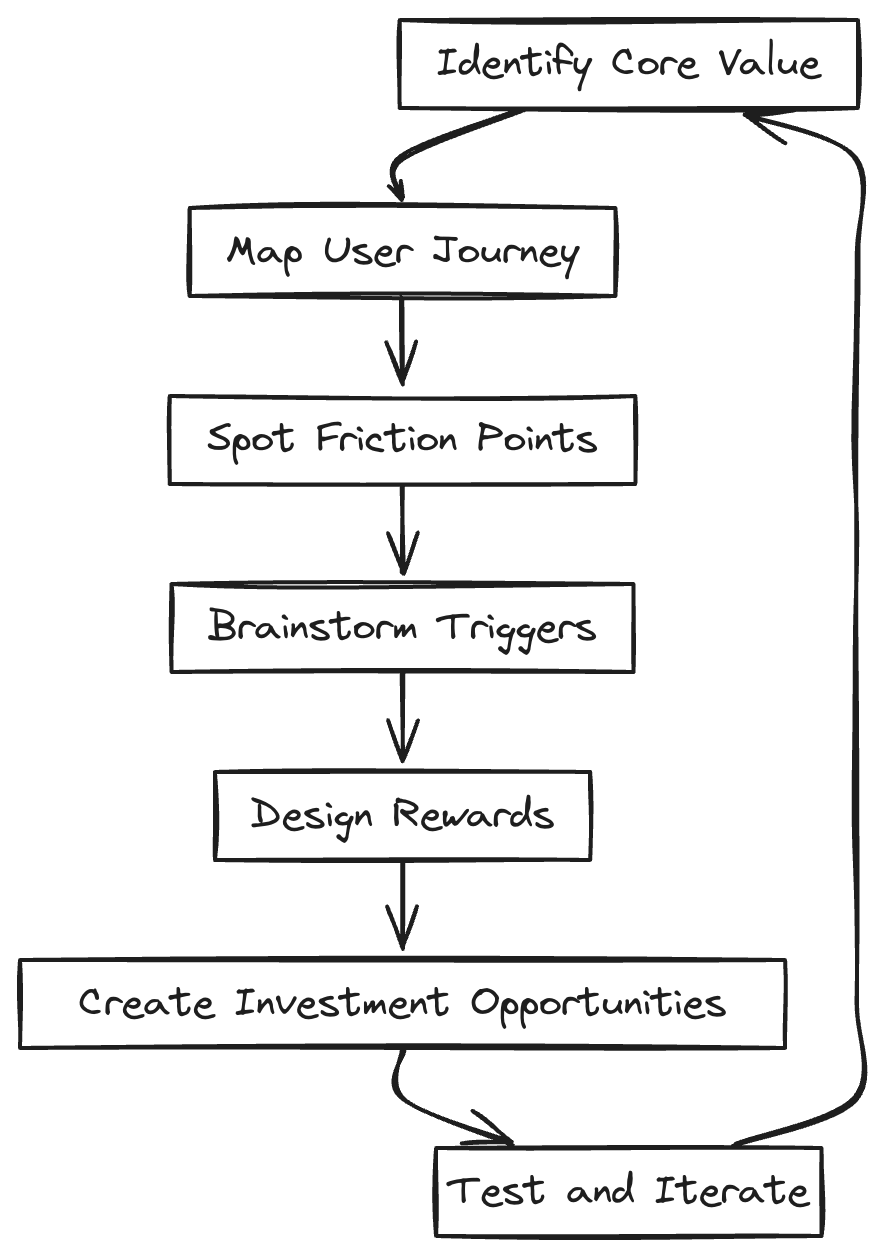7 Engagement Loops That'll Turn Your Users into Addicts (Ethically, Of Course)
Unlock the secrets of habit-forming products and watch your retention soar
Hey there, Smarketers!
Let's talk about the holy grail of product design: engagement loops that turn casual users into die-hard fans. I'm not talking about dark patterns or manipulative tactics here. I'm talking about creating genuine value that keeps users coming back for more.
First things first, let's break down what an engagement loop actually is:
This is your basic engagement loop. It's the backbone of habit-forming products. But here's the kicker: not all loops are created equal. Let's dive into 7 engagement loops that'll supercharge your product's stickiness:
1. The Social Proof Loop Example: LinkedIn's "X people viewed your profile"
This loop taps into our innate desire for validation and curiosity. Here's how it works:
Trigger: Notification of profile views Action: Check who viewed your profile Reward: Satisfy curiosity, feel important Investment: Update profile to get more views
Why it works: It creates a sense of FOMO and encourages users to keep their profiles up-to-date.
2. The Progress Loop Example: Duolingo's streak counter
This loop leverages our love of achievement and fear of losing progress.
Trigger: Daily reminder Action: Complete a lesson Reward: Extend streak, earn points Investment: Time spent learning
Why it works: It taps into loss aversion and the sunk cost fallacy (in a good way).
3. The Curiosity Loop Hypothetical Example: "Mystery Box" feature in a fitness app
Trigger: Notification of a new mystery workout Action: Open the app and reveal the workout Reward: Surprise and novelty of a new routine Investment: Complete the workout, rate it
Why it works: It combines unpredictability with a sense of progress, keeping users engaged and excited.
4. The Mastery Loop Example: Codecademy's skill tree
Trigger: Unlock new coding concepts Action: Complete lessons and projects Reward: Visual representation of progress Investment: Time spent coding and applying skills
Why it works: It appeals to our desire for competence and self-improvement.
5. The Reciprocity Loop Example: LinkedIn's endorsements
Trigger: Receive a skill endorsement Action: Review and accept the endorsement Reward: Validation of skills Investment: Reciprocate by endorsing others
Why it works: It creates a positive feedback loop of mutual appreciation and engagement.
6. The Scarcity Loop Hypothetical Example: Limited daily trades in a stock trading app
Trigger: Notification of available trades Action: Make strategic trades Reward: Potential gains, feeling of exclusivity Investment: Research and decision-making
Why it works: It creates a sense of urgency and encourages daily engagement.
7. The Contribution Loop Example: Wikipedia's edit history
Trigger: Notice an incomplete or inaccurate article Action: Make an edit or contribution Reward: See your edit live, feel part of a community Investment: Time spent researching and writing
Why it works: It taps into our desire to be part of something bigger than ourselves.
Now, let's talk strategy. How do you discover the right engagement loop for your product?
Here's a simple framework:
1. Identify Core Value: What's the main benefit users get from your product?
2. Map User Journey: How do users currently interact with your product?
3. Spot Friction Points: Where do users drop off or lose interest?
4. Brainstorm Triggers: What could prompt users to take action?
5. Design Rewards: How can you provide immediate gratification?
6. Create Investment Opportunities: How can users put something of value into the system?
7. Test and Iterate: Implement, measure, and refine your loop.
Remember, the key is to create loops that align with your users' goals and values. You're not trying to trick them – you're trying to help them form habits that genuinely improve their lives.
Here's a quick checklist to evaluate your engagement loop:
□ Does it provide clear value to the user?
□ Is the trigger noticeable but not annoying?
□ Is the action easy to perform?
□ Is the reward immediate and satisfying?
□ Does the investment feel natural and worthwhile?
□ Does it respect user privacy and consent?
□ Can it be sustained long-term without burning out users?
Now, I want to hear from you. What engagement loops have you seen in the wild that really hooked you? And more importantly, how are you thinking about implementing these in your own products?
Hit reply and let me know. The best responses might just find their way into our next newsletter (with your permission, of course).
Until next time, keep iterating and stay ethical!
SK
P.S. If you found this newsletter valuable, share it with a fellow founder or marketer. Let's spread the knowledge and raise the bar for product design together.





